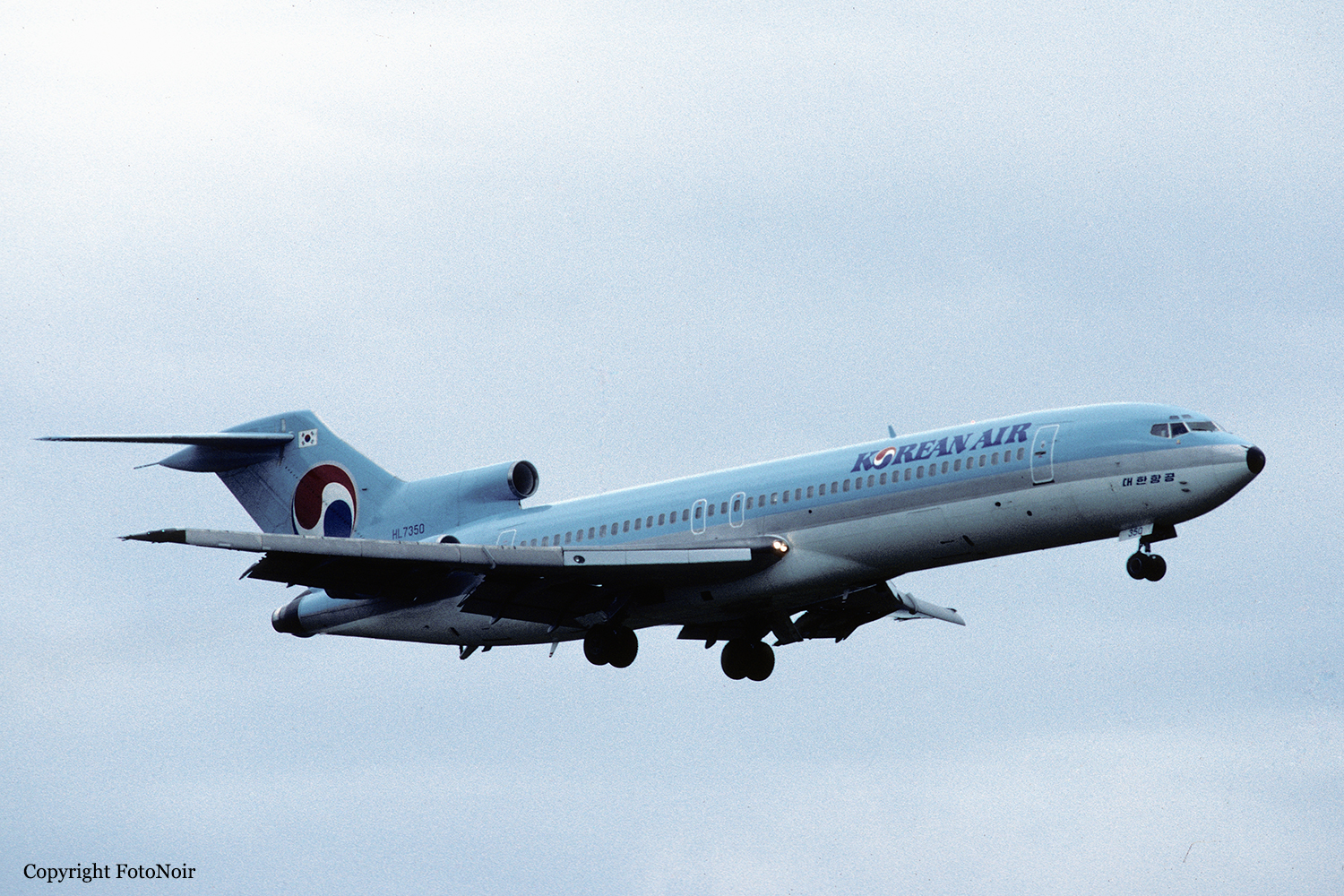Region
Crash of a Beechcraft C-12F Huron near Pyongtaek: 2 killed
Date & Time:
Aug 12, 2003 at 1443 LT
Registration:
84-0169
Survivors:
No
Schedule:
Pyongtaek - Pyongtaek
MSN:
BL-99
YOM:
1984
Crew on board:
2
Crew fatalities:
Pax on board:
0
Pax fatalities:
Other fatalities:
Total fatalities:
2
Circumstances:
The crew departed Pyongtaek-Desiderio AAF on a local test flight. The goal of the flight was to test the aircraft after replacement stall strips had been fitted to the outer edge of the wings. In flight, the crew lost control of the airplane that entered a dive and crashed in a field, bursting into flames. Both occupants were killed.
Probable cause:
Failure of the crew to follow the procedures while attempting to create stall conditions, which caused the aircraft to enter an irrecoverable situation.
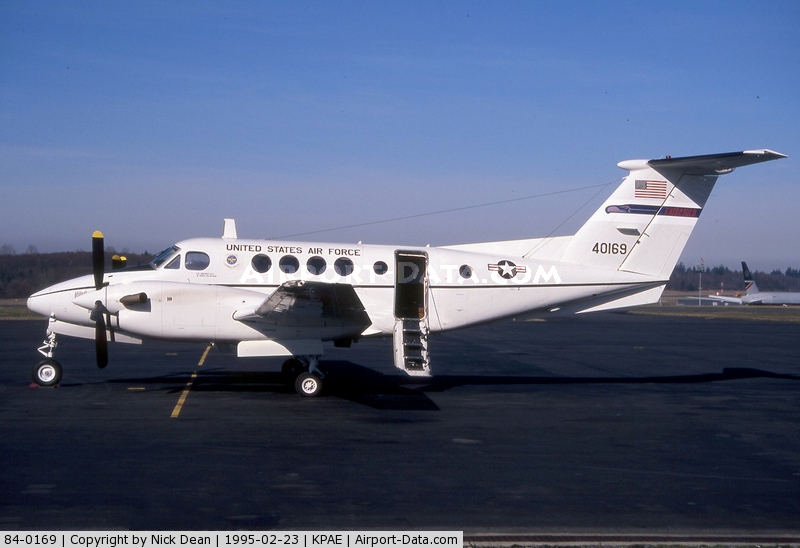

Crash of a Boeing 767-2J6ER in Busan: 129 killed
Date & Time:
Apr 15, 2002 at 1121 LT
Registration:
B-2552
Survivors:
Yes
Schedule:
Beijing - Busan
MSN:
23308
YOM:
1985
Flight number:
CA129
Crew on board:
11
Crew fatalities:
Pax on board:
155
Pax fatalities:
Other fatalities:
Total fatalities:
129
Captain / Total hours on type:
6287.00
Copilot / Total hours on type:
1215
Aircraft flight hours:
39541
Aircraft flight cycles:
14308
Circumstances:
On April 15, 2002, about 11:21:17, Air China flight 129, a Boeing 767-200ER, operated by Air China International (Air China hereinafter), en route from Beijing, China to Busan, Korea, crashed during a circling approach, on Mt. Dotdae located 4.6 km north of runway 18R threshold at Busan/Gimhae International Airport (Gimhae airport hereinafter), at an elevation of 204 meters. The flight was a regularly scheduled international passenger service flight operating under instrument flight rules (IFR) within Korean airspace, according to the provisions of the Korean Aviation Act and Convention on International Civil Aviation. One captain, one first officer and one second officer, eight flight attendants, and 155 passengers were on board at the time of the accident. The aircraft was completely destroyed by impact forces and a post crash fire. Of the 166 persons on board, 37 persons including the captain and two flight attendants survived, while the remaining 129 occupants including two copilots were killed.
Probable cause:
3.1 Findings Related to Probable Causes:
1. The flight crew of flight 129 performed the circling approach, not being aware of the weather minima of widebody aircraft (B767-200) for landing, and in the approach briefing, did not include the missed approach, etc., among the items specified in Air China’s operations and training manuals.
2. The flight crew exercised poor crew resource management and lost situational awareness during the circling approach to runway 18R, which led them to fly outside of the circling approach area, delaying the base turn, contrary to the captain’s intention to make a timely base turn.
3. The flight crew did not execute a missed approach when they lost sight of the runway during the circling approach to runway 18R, which led them to strike high terrain (mountain) near the airport.
4. When the first officer advised the captain to execute a missed approach about 5 seconds before impact, the captain did not react, nor did the first officer initiate the missed approach himself.
1. The flight crew of flight 129 performed the circling approach, not being aware of the weather minima of widebody aircraft (B767-200) for landing, and in the approach briefing, did not include the missed approach, etc., among the items specified in Air China’s operations and training manuals.
2. The flight crew exercised poor crew resource management and lost situational awareness during the circling approach to runway 18R, which led them to fly outside of the circling approach area, delaying the base turn, contrary to the captain’s intention to make a timely base turn.
3. The flight crew did not execute a missed approach when they lost sight of the runway during the circling approach to runway 18R, which led them to strike high terrain (mountain) near the airport.
4. When the first officer advised the captain to execute a missed approach about 5 seconds before impact, the captain did not react, nor did the first officer initiate the missed approach himself.
Final Report:
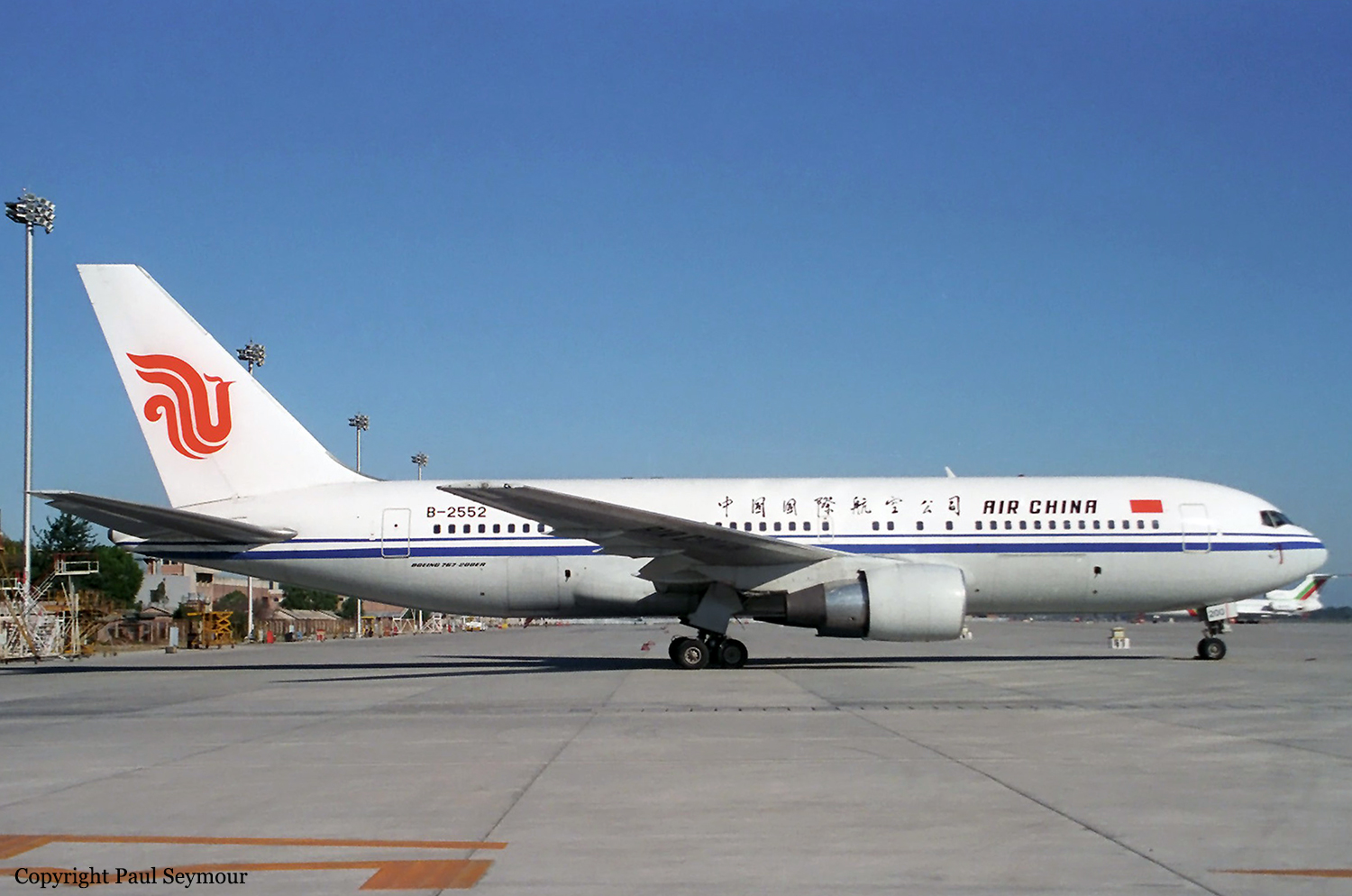
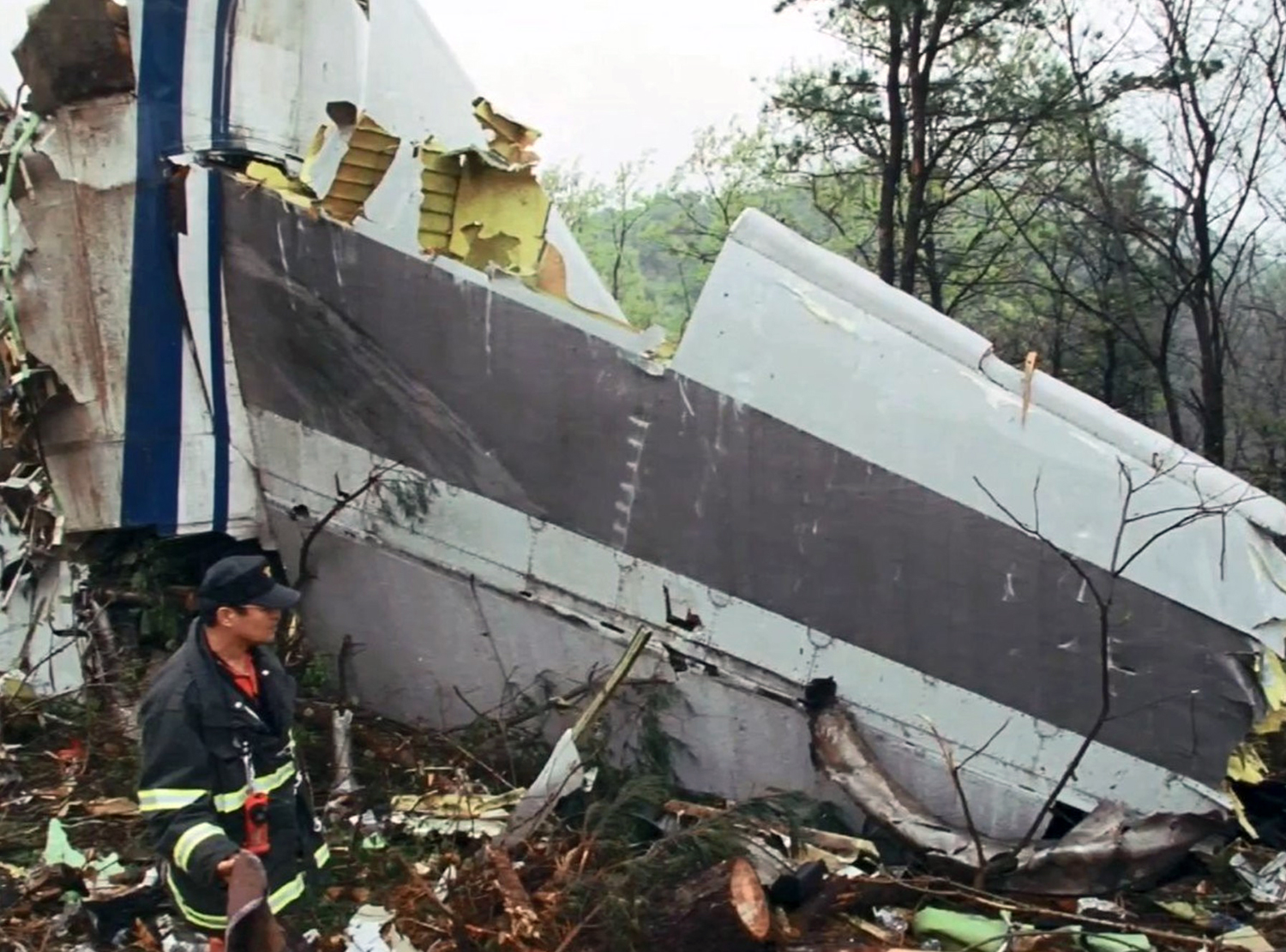
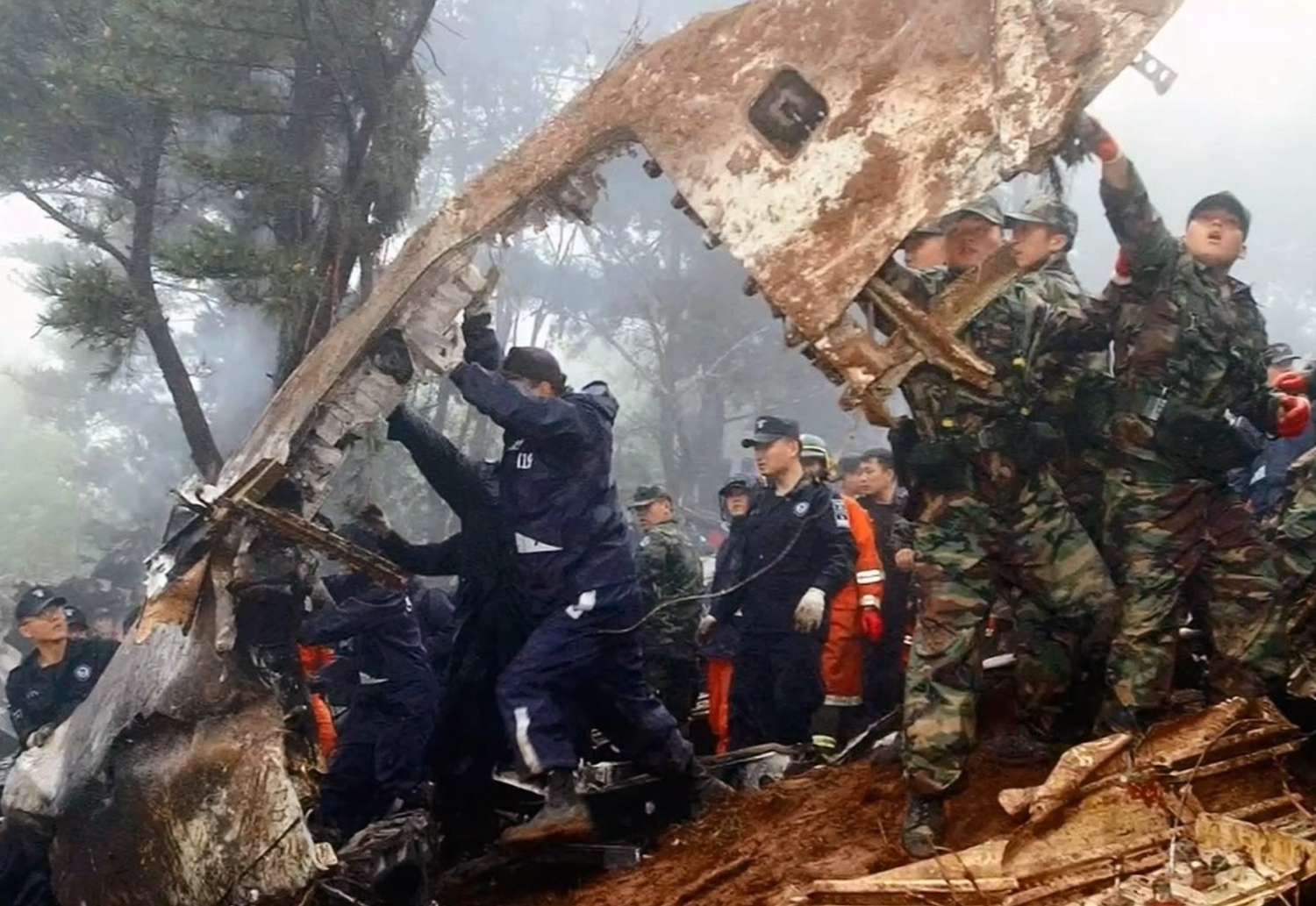
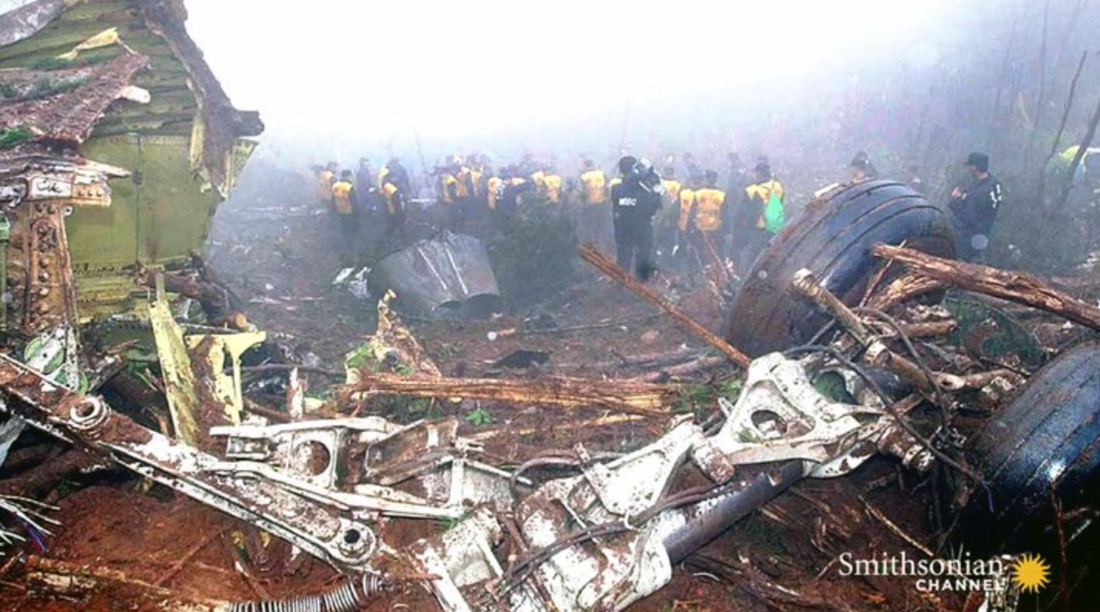

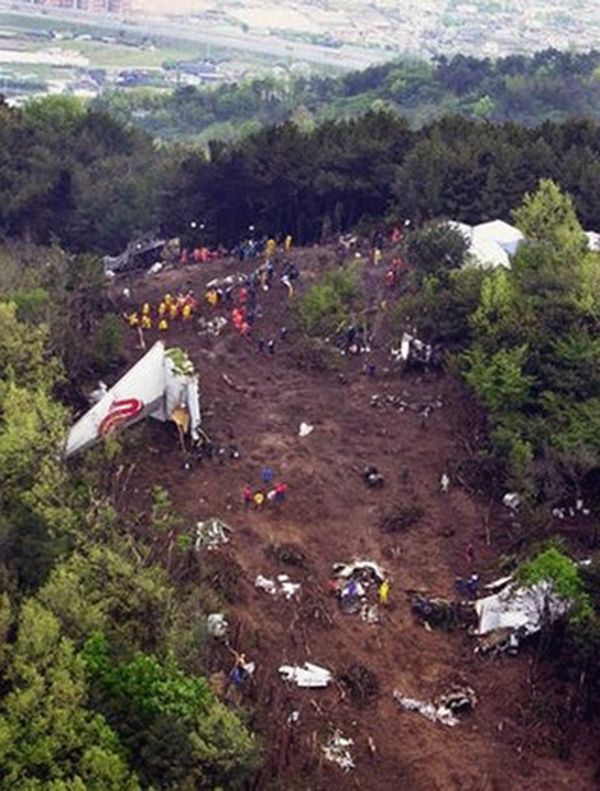
Crash of a McDonnell Douglas MD-83 in Pohang
Date & Time:
Mar 15, 1999 at 1155 LT
Registration:
HL7570
Survivors:
Yes
Schedule:
Seoul - Pohang
MSN:
53485
YOM:
1996
Flight number:
KE1533
Crew on board:
6
Crew fatalities:
Pax on board:
150
Pax fatalities:
Other fatalities:
Total fatalities:
0
Circumstances:
On approach to Pohang Airport, the crew encountered poor weather conditions with rain falls and strong winds. The captain decided to initiate a go-around procedure and started a second approach few minutes later. On approach to runway 10, the wind component changed and the crew continued the descent with a 20 knots tailwind. At an excessive speed of 158 knots, the aircraft landed 1,500 feet past the runway threshold. On a wet runway surface, the aircraft was unable to stop within the remaining distance (runway 10 is 7,000 feet long), overran, struck a 3 metres high embankment and came to rest in a ravine, broken in two. All 156 occupants were rescued, among them 60 passengers were injured, two seriously.
Probable cause:
The following findings were identified:
- Poor crew action during an approach in poor weather conditions,
- Excessive tailwind component,
- Misuse of brake and thrust reverser systems during the landing roll, about 27 seconds after touchdown only,
- The crew failed to initiate a go-around procedure as the landing was obviously missed,
- Poor ground assistance.
- Poor crew action during an approach in poor weather conditions,
- Excessive tailwind component,
- Misuse of brake and thrust reverser systems during the landing roll, about 27 seconds after touchdown only,
- The crew failed to initiate a go-around procedure as the landing was obviously missed,
- Poor ground assistance.
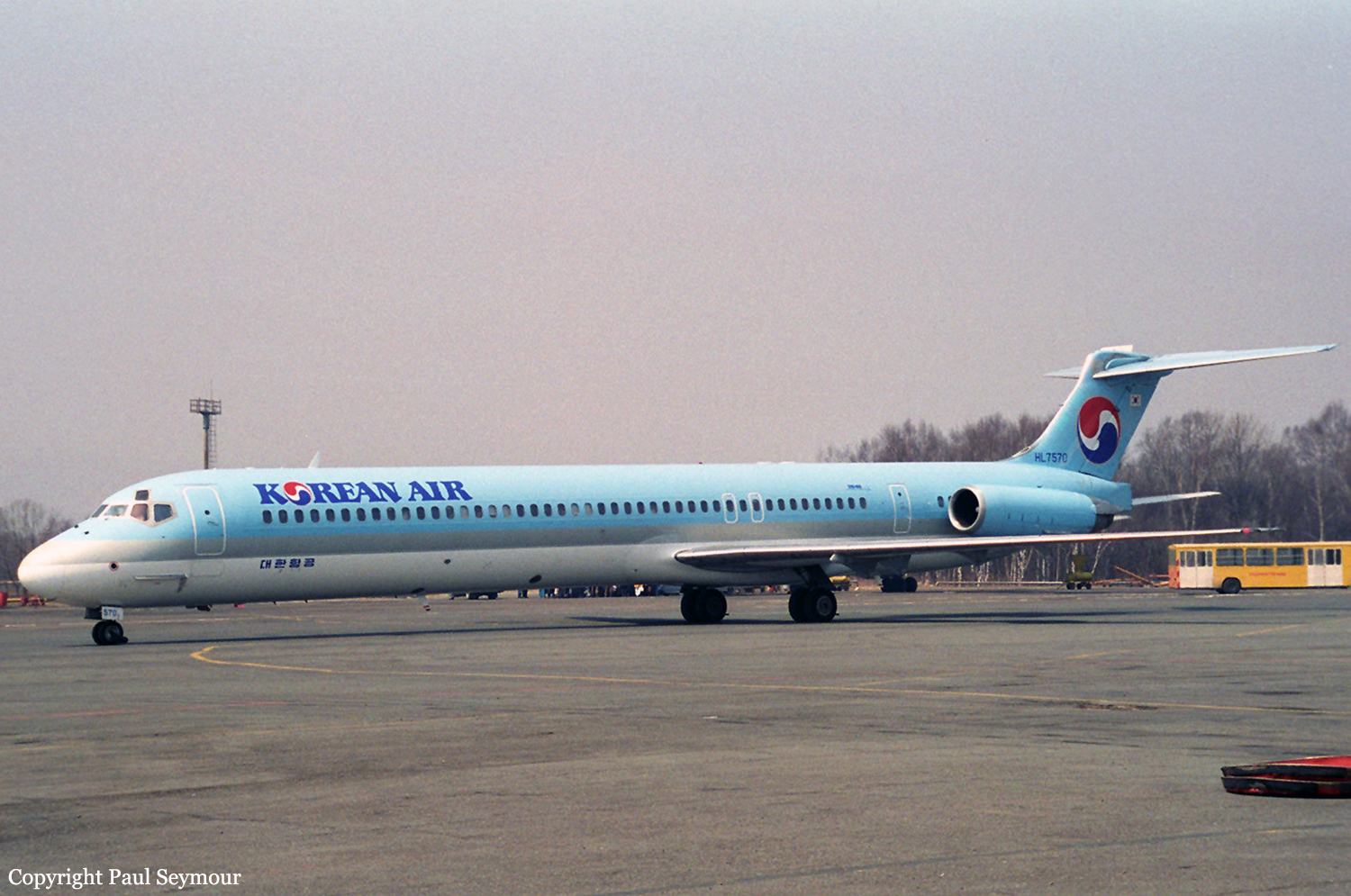

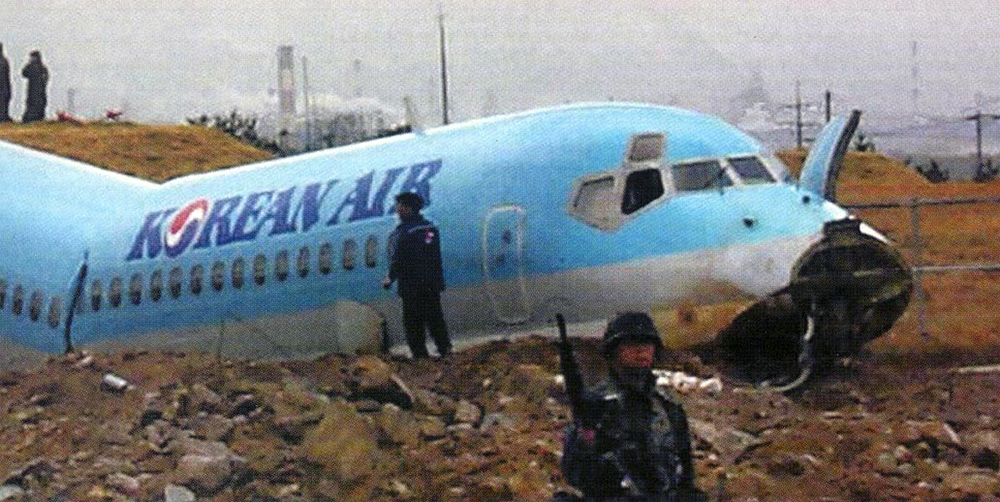
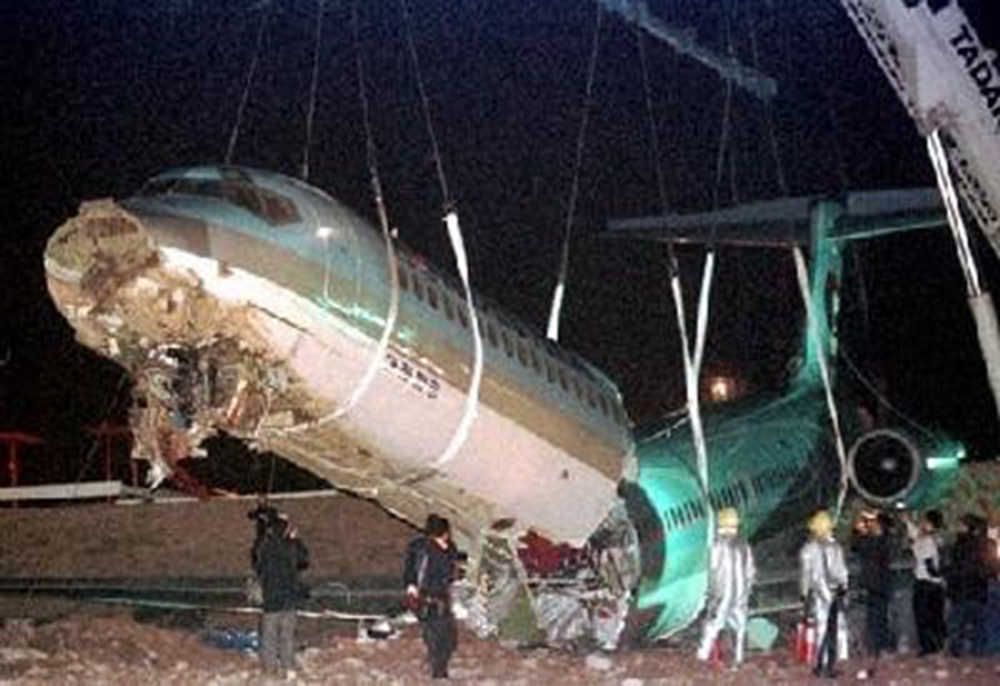
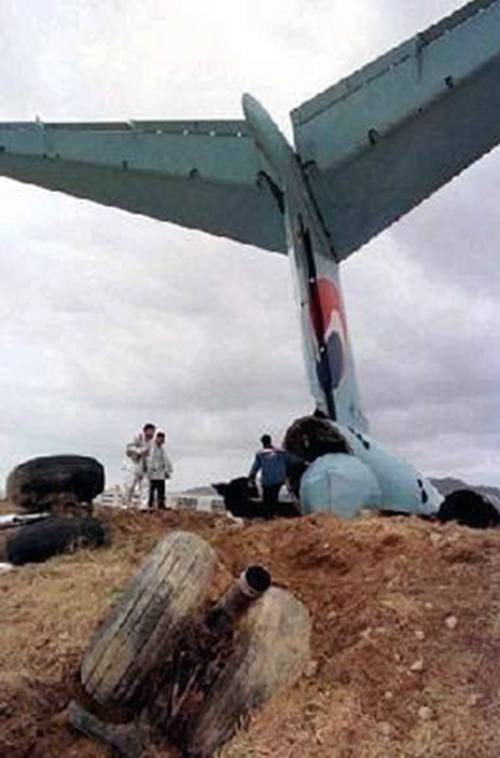
Crash of a Boeing 747-4B5 in Seoul
Date & Time:
Aug 5, 1998 at 2201 LT
Registration:
HL7496
Survivors:
Yes
Schedule:
Tokyo - Jeju - Seoul
MSN:
26400
YOM:
1996
Flight number:
KE8702
Crew on board:
16
Crew fatalities:
Pax on board:
379
Pax fatalities:
Other fatalities:
Total fatalities:
0
Circumstances:
Originally, the flight was a direct one from Tokyo-Narita to Seoul but due to poor weather conditions at destination, the crew diverted to Jeju. The aircraft departed Jeju Airport at 2107LT on the final leg to Seoul-Gimpo Airport. At destination, weather conditions were still poor with heavy rain falls and wind from 220 gusting to 22 knots. After touchdown on runway 14R, the crew started the braking procedure but the aircraft deviated to the right and veered off runway. While contacting soft ground, the aircraft lost its undercarriage and came to rest. All 395 occupants evacuated, among them 20 were slightly injured. The aircraft was damaged beyond repair.
Probable cause:
It was determined that the loss of control after touchdown was the consequence of the captain's misuse of the thrust reverser during the landing roll and his confusion over crosswind conditions. Investigations revealed that after touchdown, the n°1 engine thrust reverser did not deploy because the n°1 engine power lever's position did not allow the reverser to be deployed. The following contributing factors were identified:
- Poor weather conditions,
- Cross wind component,
- Wet runway surface,
- Poor braking action.
- Poor weather conditions,
- Cross wind component,
- Wet runway surface,
- Poor braking action.
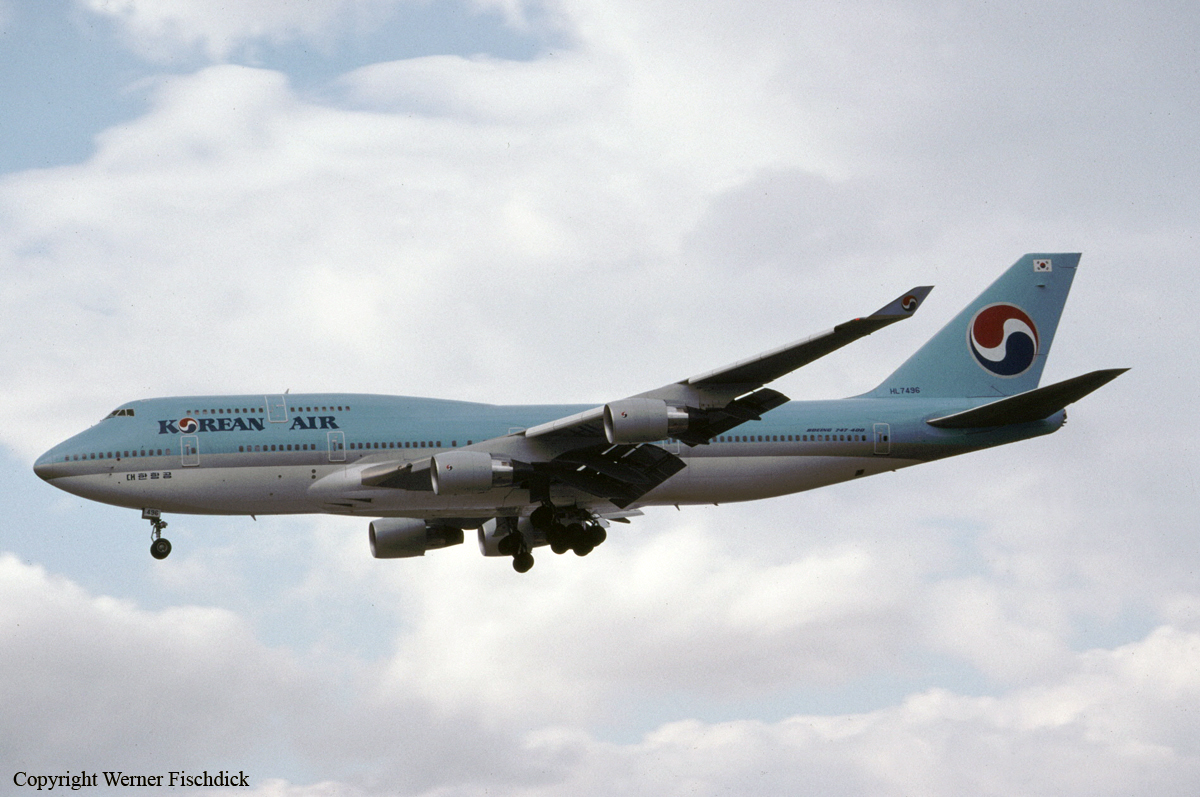
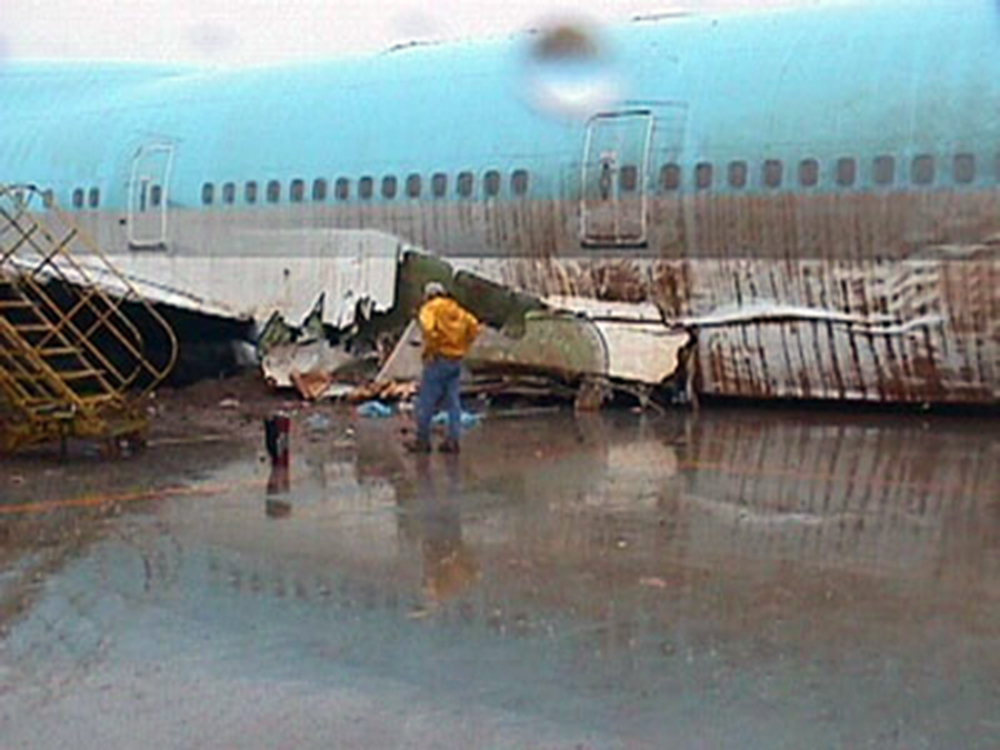
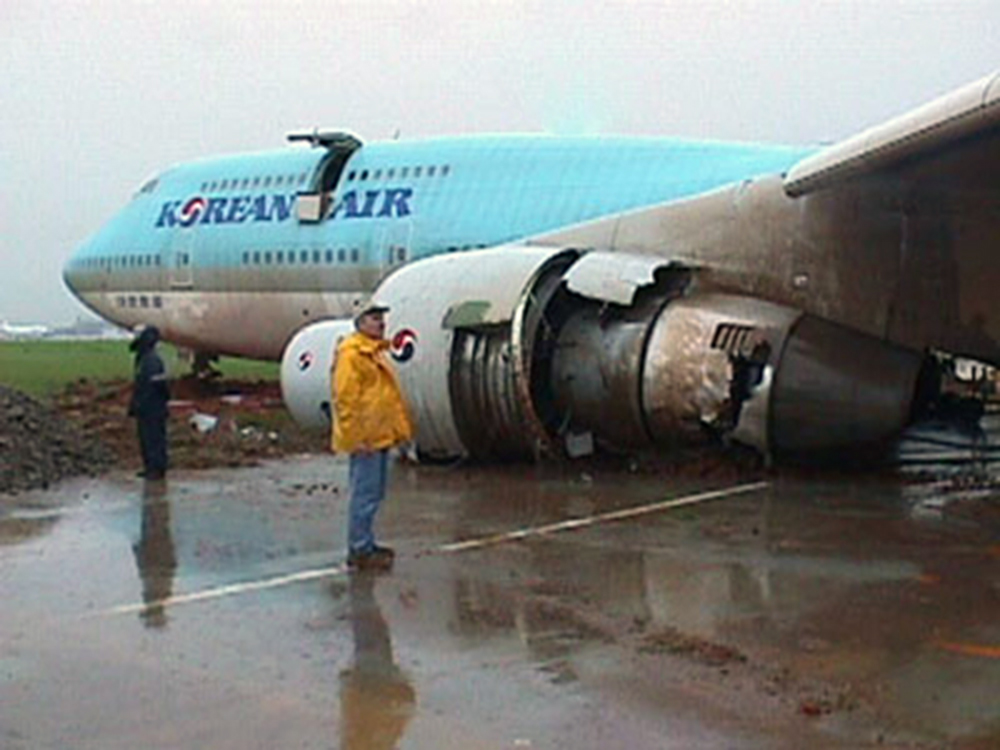
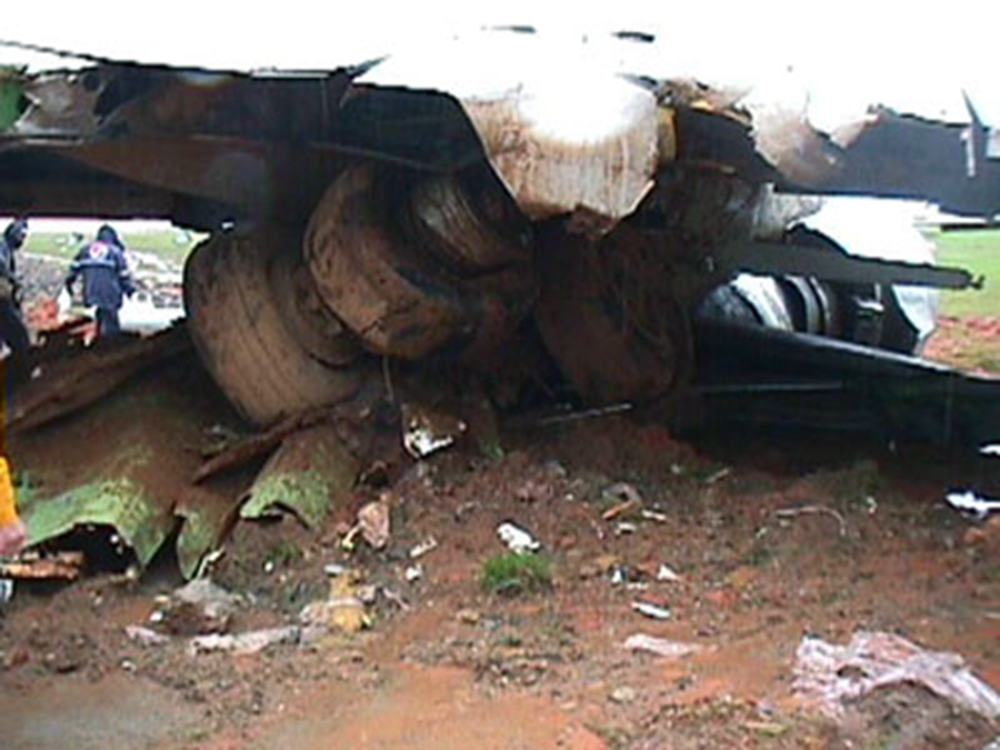
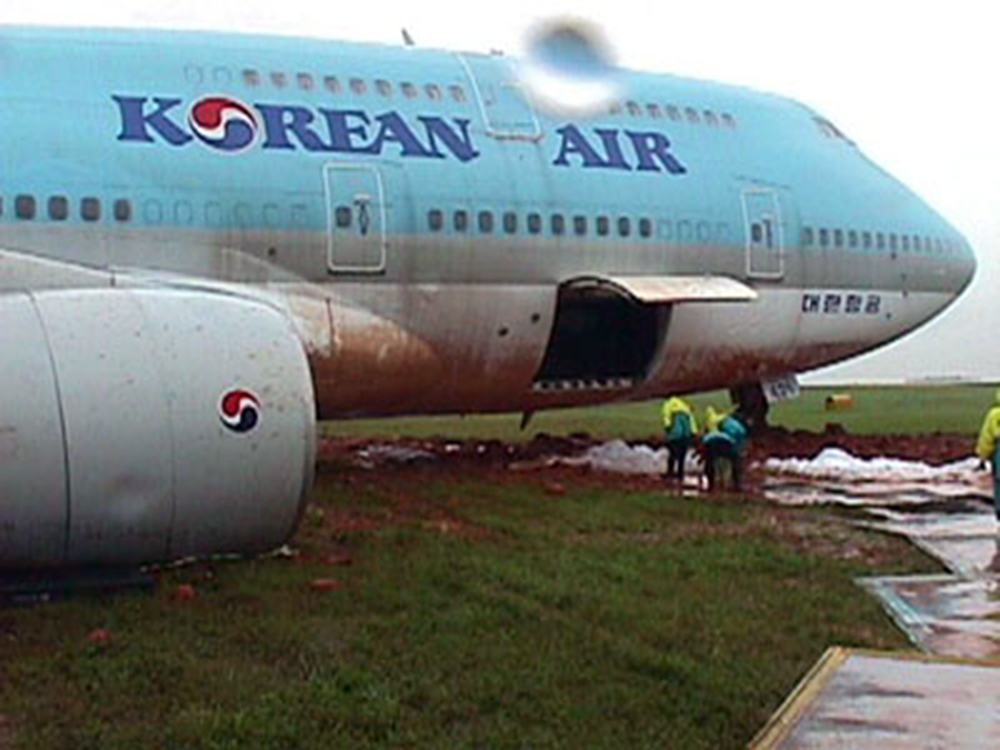

Crash of an Airbus A300B4-622R in Jeju
Date & Time:
Aug 10, 1994 at 1122 LT
Registration:
HL7296
Survivors:
Yes
Schedule:
Seoul - Jeju
MSN:
583
YOM:
1990
Flight number:
KE2033
Crew on board:
8
Crew fatalities:
Pax on board:
152
Pax fatalities:
Other fatalities:
Total fatalities:
0
Circumstances:
The descent and approach to Jeju Airport was completed in poor weather conditions with turbulences and heavy rain falls as typhoon 'Doug' was passing over. On final approach, flaps were deployed at 15°/20° as the captain was suspecting windshear and microburst conditions. Twice, the copilot informed the captain about the approach speed of 147 knots which was acknowledged. The captain continued the approach but too high on the glide, the aircraft landed too far down the runway, about 1,773 metres past its threshold. On a wet runway surface, the aircraft was unable to stop within the remaining distance (1,227 metres remaining), overran at a speed of 104 knots and eventually collided with a concrete wall and military barracks, bursting into flames. All 160 occupants were quickly evacuated, among them seven were slightly injured.
Probable cause:
Wrong approach configuration on part of the crew who completed the approach at an excessive speed and too high on the glide. Investigations did not confirm any windshear or microburst conditions. The crew failed to initiate a go-around procedure.


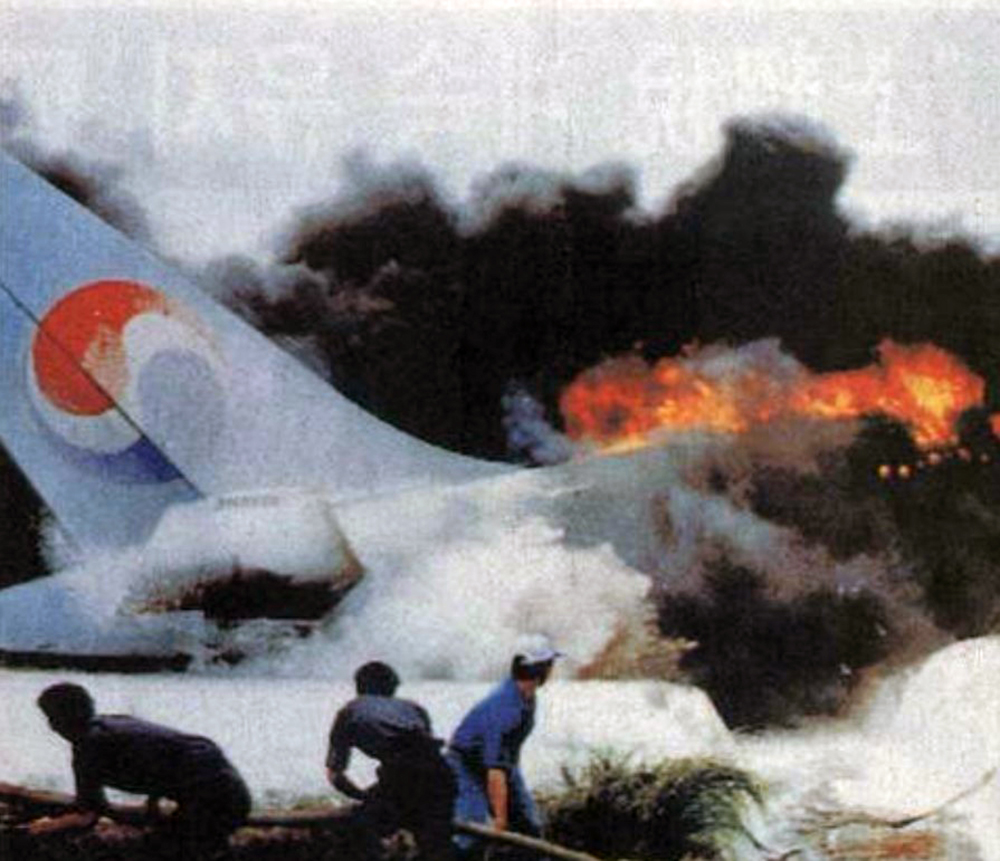
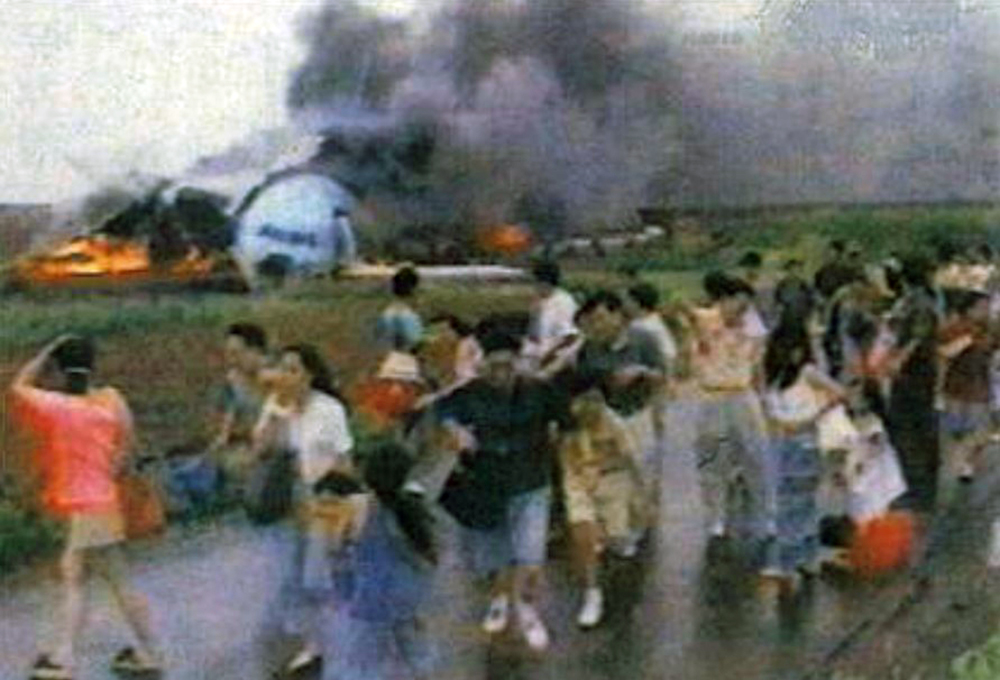

Crash of a Boeing 737-5L9 in Mokpo: 68 killed
Date & Time:
Jul 26, 1993 at 1548 LT
Registration:
HL7229
Survivors:
Yes
Schedule:
Seoul - Mokpo
MSN:
24805
YOM:
1990
Flight number:
OZ733
Crew on board:
6
Crew fatalities:
Pax on board:
110
Pax fatalities:
Other fatalities:
Total fatalities:
68
Aircraft flight hours:
7301
Aircraft flight cycles:
5707
Circumstances:
Following an eventful flight from Seoul-Gimpo, the crew started the descent to Mokpo Airport in poor weather conditions with low clouds, heavy rain falls and strong winds. A first attempt to land was abandoned as well as a second few minutes later as the crew was unable to establish a visual contact with the runway. On a third attempt to land under VOR/DME mode, the crew failed to realize his altitude was too low when the aircraft struck the wooded slope of Mt Ungeo located about 7,5 km short of runway 06 threshold. Two crew members and 66 passengers were killed while 48 other occupants were injured.
Probable cause:
The crew took the decision to continue the approach in below weather minima until the aircraft impacted ground, resulting in a controlled flight into terrain. Poor weather conditions, limited visibility, poor crew monitoring and wrong approach configuration were considered as contributing factors.
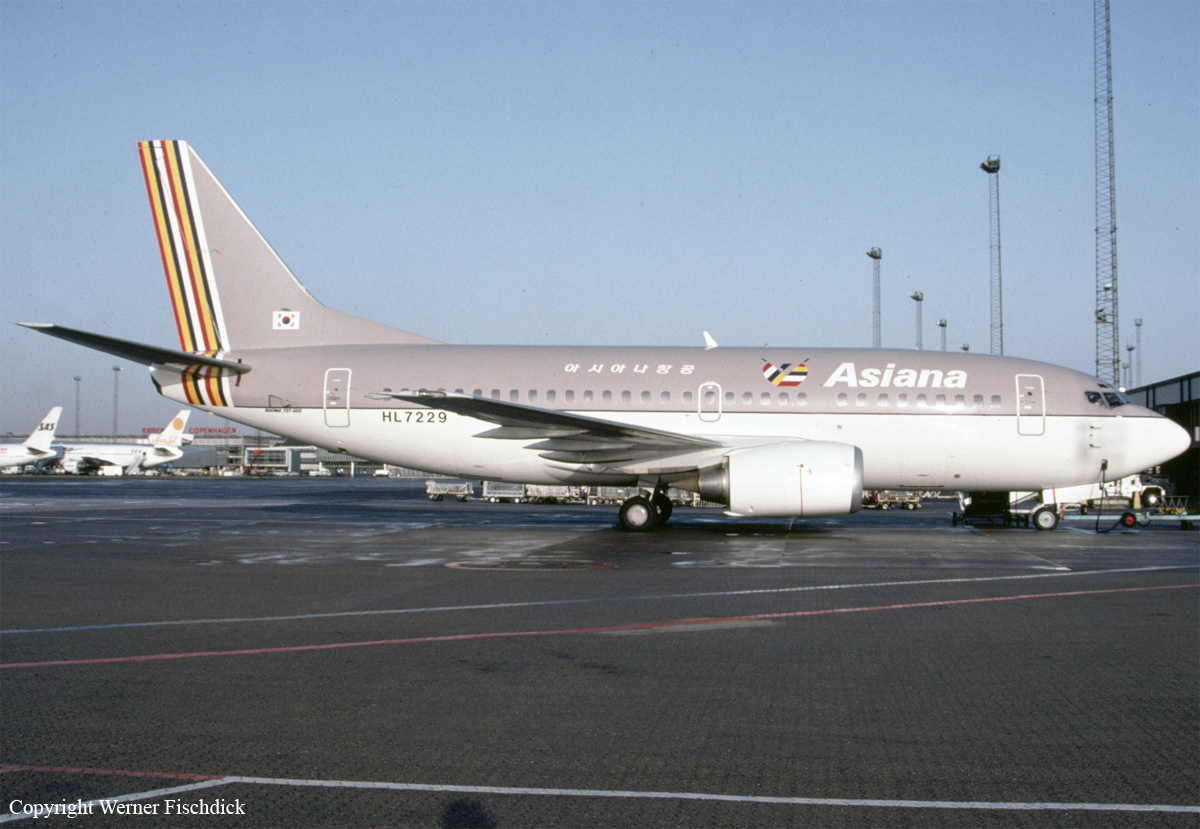

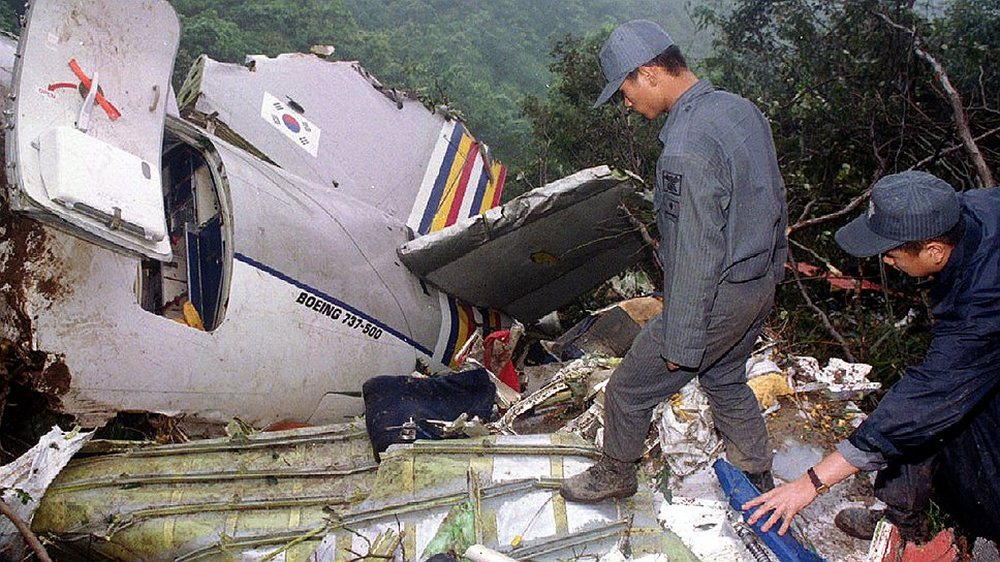




Crash of a Boeing 727-281 in Daegu
Date & Time:
Jun 13, 1991 at 1841 LT
Registration:
HL7350
Survivors:
Yes
Schedule:
Jeju - Daegu
MSN:
20469
YOM:
1970
Crew on board:
7
Crew fatalities:
Pax on board:
120
Pax fatalities:
Other fatalities:
Total fatalities:
0
Circumstances:
On final approach to Daegu Airport, the crew failed to follow the approach checklist and did not select gear down. An alarm sounded in the cockpit but the crew thought this was an error and pulled out the circuit breaker so the alarm stopped. Despite the situation, the crew failed to double check the three landing gear lights that remained red and continued the approach when the aircraft landed on its belly before coming to rest. All 127 occupants were evacuated, among them 7 passengers were slightly injured. The aircraft was damaged beyond repair.
Probable cause:
Belly landing after the crew failed to follow the approach checklist and forgot to select gear down.
